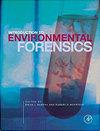Distribution and sources of fatty acids in surface sediments of mangrove ecosystems in the Northern Kerala Coast, India
IF 1.2
4区 环境科学与生态学
Q4 ENVIRONMENTAL SCIENCES
引用次数: 0
Abstract
Abstract Fatty acids and bulk geochemical proxies were employed to understand the sources and transformation of sedimentary organic matter from surface sediments of major five mangrove systems in the northern Kerala coast. Texture, tidal rhythm and the proximity to the south eastern Arabian Sea were the main factors influencing distribution and accumulation of the organic matter in these systems. A total of 118 fatty acids were quantified and grouped into short-chain (SCFA), long-chain (LCFA), monounsaturated (MUFA), polyunsaturated (PUFA) and branched-chain (BrFA) fatty acids, hydroxy fatty acids, cyclic fatty acids, and dicarboxylic acids. The distribution of fatty acid groups was in the order SCFA > BrFA > MUFA > LCFA > PUFA. Total fatty acids (TFA) concentration exhibited profound seasonal variations and ranged from 6.25 to 580.49 μg/g (pre-monsoon > post-monsoon > monsoon except in Kadalundi which follows the reverse order). The sedimentary fatty acids in the study region reveal a wide spectrum of inputs from terrestrial, planktonic (preponderance of diatom followed by dinoflagellates along with brown algae, cyanobacteria, red algae) and bacterial sources (e.g., Desulfobulbus-type bacteria, sulfur-reducing bacteria, Sulfur-oxidizing bacteria). Significant concentrations of bacterial fatty acids suggest the functioning of an effective microbial loop and various biogeochemical pathways operating in these sediments (sulfate reduction, iron and manganese oxide reduction, etc.).印度喀拉拉邦北部海岸红树林生态系统表层沉积物中脂肪酸的分布和来源
本文章由计算机程序翻译,如有差异,请以英文原文为准。
求助全文
约1分钟内获得全文
求助全文
来源期刊

Environmental Forensics
环境科学-环境科学
CiteScore
4.90
自引率
5.60%
发文量
23
审稿时长
3 months
期刊介绍:
Environmental Forensics provides a forum for scientific investigations that address environment contamination, its sources, and the historical reconstruction of its release into the environment. The context for investigations that form the published papers in the journal are often subjects to regulatory or legal proceedings, public scrutiny, and debate. In all contexts, rigorous scientific underpinnings guide the subject investigations.
Specifically, the journal is an international, quarterly, peer-reviewed publication offering scientific studies that explore or are relevant to the source, age, fate, transport, as well as human health and ecological effects of environmental contamination. Journal subject matter encompasses all aspects of contamination mentioned above within the environmental media of air, water, soil, sediments and biota. Data evaluation and analysis approaches are highlighted as well including multivariate statistical methods. Journal focus is on scientific and technical information, data, and critical analysis in the following areas:
-Contaminant Fingerprinting for source identification and/or age-dating, including (but not limited to) chemical, isotopic, chiral, mineralogical/microscopy techniques, DNA and tree-ring fingerprinting
-Specific Evaluative Techniques for source identification and/or age-dating including (but not limited to) historical document and aerial photography review, signature chemicals, atmospheric tracers and markets forensics, background concentration evaluations.
-Statistical Evaluation, Contaminant Modeling and Data Visualization
-Vapor Intrusion including delineating the source and background values of indoor air contamination
-Integrated Case Studies, employing environmental fate techniques
-Legal Considerations, including strategic considerations for environmental fate in litigation and arbitration, and regulatory statutes and actions
 求助内容:
求助内容: 应助结果提醒方式:
应助结果提醒方式:


